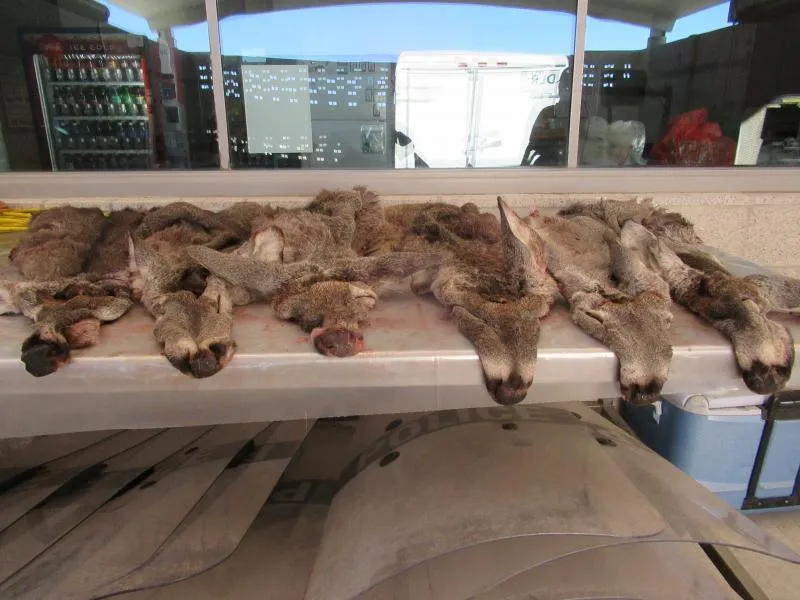DEL RIO, Texas – At the peak of deer hunting season, it is not uncommon to see trophy antlers imported from Mexico, but vigilant U.S. Customs and Border Protection (CBP) agriculture specialists at Del Rio Port of Entry recently discovered live ticks, which can carry cattle fever, on concealed deer hides in two separate enforcement actions.
“Live ticks on deer hides pose a particularly significant risk to the U.S. cattle industry as they can carry bovine babesiosis, a disease that leads to production losses and high mortality for commercial cattle,” said Port Director Liliana Flores, Del Rio Port of Entry. “These seizures underscore the vital role our agriculture specialists play in preventing entry of pests and diseases and safeguarding our American agriculture industry.”

microplus and Rhipicephalus (Boophilus) annulatus are
observed on deer hides seized by CBP agriculture
specialists at Del Rio Port of Entry.
The most recent incident occurred on Jan. 10 at Del Rio International Bridge, when CBP officers referred a vehicle for a secondary examination. During the examination, CBP agriculture specialists discovered a deer hide at the bottom of the ice chest with live ticks on it. The driver also lacked a tag for the deer and requisite import paperwork from U.S. Fish and Wildlife Service. The driver was issued a $300 penalty for failure to declare the deer hide and was returned to Mexico with deer meat.
The other incident occurred on Jan. 7 at the same bridge. CBP officers referred a vehicle for agriculture examination after receiving a declaration for antlers and meat. CBP agriculture specialists discovered six deer hides that were turned inside-out in freezer bags co-mingled with bags containing deer meat. The hides contained live ticks. The driver was issued a $300 penalty.
Deer hides are regulated as they can carry ticks, including Rhipicephalus (Boophilus) microplus and Rhipicephalus (Boophilus) annulatus, which are known vectors for bovine babesiosis, commonly called cattle fever. This protozoal disease ruptures a cow’s red blood cells and can cause lowered milk production, weight loss, increased respiratory rate and death. It caused enormous losses to the U.S. cattle industry in the late 1800s and early 1900s and is still a threat today.
For more information on proper importation of wildlife and animal products, and the following U.S. Department of Agriculture (USDA) website.

containing live ticks co-mingled with deer meat bags
during a recent examination at Del Rio Port of Entry.

